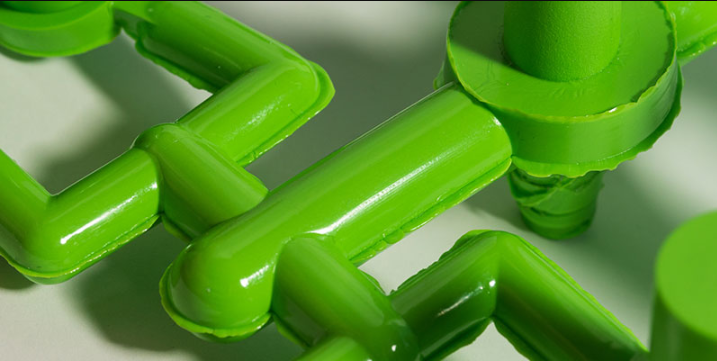
Flash in injection molding refers to excess material that flows outside the intended part cavity, typically along the parting line, ejector pins, or vent areas. Flash can be unsightly and may require additional post-processing to remove, adding to production costs. Here are several strategies to help avoid flash during the injection molding process:
1. Optimize Mold Design
- Parting Line Fit: Ensure the parting line of the mold halves is precisely aligned and fits tightly together. Any gaps can allow material to seep through.
- Clamping Force: The mold should be designed to withstand the clamping force applied by the injection molding machine without deforming.
- Ejector Pins: Properly size and position ejector pins to prevent gaps that can cause flash. Ensure they are flush with the mold surface during injection.
- Vent Design: Vents should be designed to release trapped air but be small enough to prevent plastic from flowing through.
[elementor-template id=”4330″]
2. Machine Setup and Maintenance
- Clamp Force: Ensure the injection molding machine provides sufficient clamp force to keep the mold halves tightly closed during injection. The clamp force should match the requirements of the mold and the material being used.
- Machine Calibration: Regularly calibrate and maintain the injection molding machine to ensure accurate and consistent operation.
- Barrel and Screw Wear: Inspect the barrel and screw for wear and replace them as needed. Worn components can lead to inconsistent material flow and pressure.
3. Process Parameters
- Injection Pressure: Use appropriate injection pressure. Excessive pressure can force material into undesired areas, causing flash.
- Injection Speed: Optimize the injection speed to ensure the material fills the cavity evenly without creating excessive pressure at the parting line.
- Melt Temperature: Maintain the correct melt temperature for the material. Overheating can cause excessive material flow, while too low a temperature can lead to incomplete filling.
- Cooling Time: Allow sufficient cooling time to solidify the material before mold opening. Insufficient cooling can cause the material to remain too fluid, leading to flash.
4. Material Considerations
- Material Viscosity: Choose materials with appropriate viscosity for the mold design. Materials that are too low in viscosity can flow too easily, increasing the risk of flash.
- Material Quality: Use high-quality materials with consistent properties to ensure predictable behavior during the injection molding process.
5. Mold Maintenance and Inspection
- Regular Inspection: Regularly inspect the mold for wear, damage, or misalignment. Address any issues promptly to maintain tight mold closure.
- Cleaning: Keep the mold clean and free from residues that could prevent proper sealing.
[elementor-template id=”4331″]
Detailed Steps to Avoid Flash
- Mold Design and Construction:
- Precision Machining: Ensure the mold is precisely machined and assembled to eliminate gaps and misalignment.
- Parting Line Design: Design the parting line to minimize the potential for flash by ensuring tight contact between mold halves.
- Ejector System: Design an efficient ejector system that avoids gaps or misalignment during ejection.
- Machine Settings:
- Clamp Force: Set the clamp force to match the material’s flow characteristics and mold requirements. Typically, the clamp force is calculated based on the projected area of the part and the injection pressure.
- Injection Speed and Pressure: Optimize injection speed and pressure to balance complete cavity filling with minimal excess material.
- Hold Pressure and Time: Adjust hold pressure and time to ensure complete packing of the mold cavity without forcing material into undesired areas.
- Material Handling:
- Proper Drying: Ensure the material is properly dried to prevent moisture-related issues that could affect flow and part quality.
- Consistent Supply: Use consistent batches of material to avoid variations in viscosity and flow behavior.
- Process Monitoring:
- Real-Time Monitoring: Implement real-time monitoring of critical parameters (e.g., injection pressure, mold temperature) to detect and address issues promptly.
- Cycle Consistency: Ensure consistent cycle times to maintain uniform part quality and reduce the risk of flash.
- Regular Maintenance:
- Mold Maintenance: Perform regular maintenance on the mold to check for wear and tear, ensuring tight sealing surfaces.
- Machine Maintenance: Keep the injection molding machine in good working condition to maintain accurate and consistent operations.
Conclusion
Preventing flash in injection molding requires a combination of proper mold design, precise machine setup, optimized process parameters, and regular maintenance. By addressing these factors, manufacturers can minimize the occurrence of flash, improve part quality, and reduce the need for additional post-processing. Continuous monitoring and fine-tuning of the injection molding process are essential for maintaining optimal production performance and product quality.
Related Conten: Prototype Injection Molding
 DTG Mould Trade Process |
|
| Quote: | According to sample, drawing and specific requirement. |
|---|---|
| Discussion | Mold material, cavity number, price, runner, payment, etc. |
| S/C Signature | Approval for all the items. |
| Advance | Pay 50% by T/T |
| Product Design Checking | We check the product design. If some position is not perfect, or can not be done on the mould, we will send customer the report. |
| Mold Processing | Send report to customer once each week |
| Mold Testing | Send trial samples and try-out report to customer for confirmation |
| Mold Modification | According to customer’s feedback. |
| Balance Settlement | 50% by T/T after the customer approved the trial sample and mould quality. |
| Delivery | Delivery by sea or air. The forwarder can be designated by your side. |
 |
|

